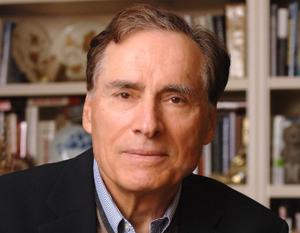Guest columnA bioterrorism threat for the birds?
In his first guest column, Leonard A. Cole, an expert on bioterrorism and on terror medicine who teaches at Rutgers University, explores the recent controversy over bird flu research, its implications on national security, and why efforts to curb information regarding the research will likely have limited success

Leaonard A. Cole // Source: Robert Cumins
A recommendation to conceal details about bird flu research has prompted a ruckus in the scientific world. The virus known as H5N1, has rarely jumped species to infect people. Only about 600 cases have been identified since 1997 when it was first found in the human population, though more than half of them died.
Last year, two teams of researchers made known they had altered the genetic structure of the virus which might make it highly contagious among humans. The research, conducted in separate laboratories in the Netherlands and at the University of Wisconsin, could lead to the development of a treatment for the disease. But some fear that the new virus could accidentally or deliberately be released from a laboratory. Further, by viewing published details about its structure, a bioterrorist might copy the blueprint and use it to devastating effect.
These scary possibilities prompted the National Science Advisory Board for Biosecurity (NSABB) in December to urge the researchers and scientific journals to refrain from publishing information about the techniques.
Several scientists and physicians supported the NSABB recommendation and were even unhappy that the research had been conducted at all. The studies “should never have been done,” said Richard Ebright, a molecular biologist at Rutgers University. “It would have been preferable if these engineered, human-transmissible strains had not been created,” echoed Thomas Inglesby, head of the Center for Biosecurity at the University of Pittsburgh. An editorial in the New York Times urged that stocks of the new virus be destroyed and questioned whether “anything at all should be published” about the studies.
These stark views received push back. Ron Fouchier, who led the Netherlands research team, said the virus he created was less dangerous than being portrayed. Andrew Pekosz, a virologist at Johns Hopkins University, worried that omission of information would prevent follow-up studies, which “short-circuits the entire scientific process.”
Howard Markel, a medical historian, contended that a naturally occurring influenza pandemic posed a graver threat than did the information about the new virus. Stifling research, he said, could hurt efforts to treat and prevent an outbreak.
Responding to the commotion, leaders of the two research teams joined other influenza investigators in late January to announce a sixty-day suspension of work on the transmissibility of H5N1 viruses in mammals. During the moratorium, beginning on 16 February, the World Health Organization (WHO) will be holding a summit on the issues. While the results are not entirely predictable, a
